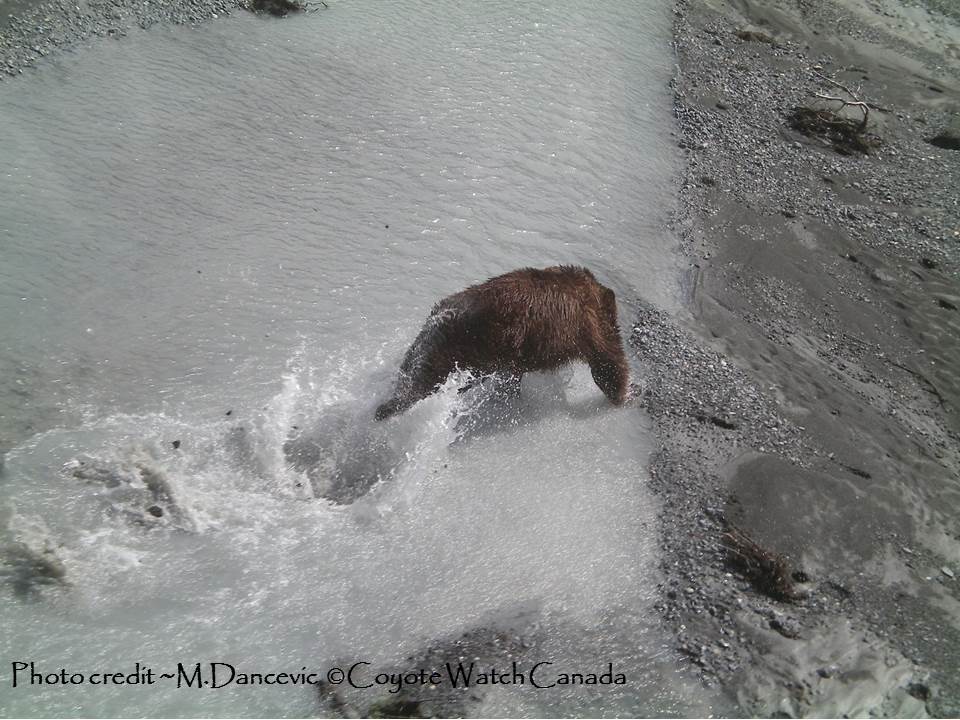As we start to expand our homes and our neighborhoods, one of the first things we usually consider is our neighbors. We recognize the needs and wants of our neighbors on all sides of us, but we often forget one set, the furry ones. We forget that the places in which we choose to live are not only homes to a wide variety of people and different cultures, but also many different animals that have called that land home for many years. We are often faced with obstacles with some of our neighbors, and most of the time we can find peaceful resolutions. The bears that live in and around our neighborhoods are also neighbors with their own needs and wants that we must be considerate of in order to coexist peacefully.
Spring rolls around and after four to six months of hibernation, bears and young cubs are making their way out of the den to look for the first spring meal. Objects in and around your yard can become easy meals and attractants for these hungry bears. Now, these bears do not go out to make conflict, but often enough the encounters they have with humans challenge our ability to coexist.

The first steps in bear proofing your yard can be as easy as removing attractants such as a frequently used grill, pet food, bird feeders, garbage and fruit trees. Grease and left over food scraps from your grill represent a tasty snack for any animal, especially bears. Removing bird feeders as soon as your local wildlife service reports bears out of their dens is a great idea. Completely remove the pet food from outside and store it inside your home in a secure location, like your garage or basement. Garbage may not seem so attractive to us, but to a curious bear it represents a world of different smells and even a n easy snack. The best thing to do would be to contact your local trash pick-up and ask about bear and wildlife proof containers. These options may be a little pricier than a typical trash receptacle but it is well worth it to keep bears in the wild and out of your yard. If it is possible, only take your trash out on the day of pick up, this leaves a very small window of opportunity for a bear to take advantage of your garbage. Fruit trees are great to have in our back yards; however the fallen fruit is a great find for any animal. Placing a portable electric fence around your fruit trees to protect the fruit from bears and other animals is one way to stop them, or if you’d like a simpler approach, just be sure to remove all fallen fruit before it can become an attractant. Doing these things, will help keep bears out of your yard, but keep in mind we are living in their territory, so the sparse sighting is still possible.
Coexisting with bears doesn’t stop in your back yard. Camping and hiking are two of the most frequent ways people encounter bears in the wild. Making sure you keep food out of your campsite and in a bear resistant container, which many campsites provide in bear frequented areas, or out of reach from a bear, is a sure way to keep bears from becoming habituated to human food sources.
While hiking in the great outdoors it is important to remember a bear will not attach unless it perceives you as a threat to itself, its cubs, or its nearby food source.
1. There is safety in numbers. Traveling in a group of four or more people can greatly reduce your risk of having an unpleasant encounter with a bear. The larger we appear, the less likely a bear will feel that our presence is a threat they should handle with force.
2. Keep the conversation going. Our voice is the only thing that distinguishes us from our wild cousins. Bear bells and whistles are okay, but the only sure way to tell a bear the noisy hiking is a human is with your voice. If you do travel alone, talk to yourself or sing your favorite song. It is okay to look a little strange to the next hiker you pass; at least you’re letting wildlife know you are here for a visit.
3. Do not approach wildlife. Bear cubs are adorable, but they are still wild and their mothers are usually not far behind.
4. Leave the snacks at home. If you’re just going for a quick day hike, don’t bring the candy bars or sweet juice drinks. Stick to water and if you need a snack, bring granola or something with less sugar. Bears can smell three miles away in a light breeze, so the pop-tarts you have in your pack probably are not the best option out in bear country.
5. Carry bear spray! Bear spray is the perfect non-lethal form of protection for your hiking adventures. It protects us, and does not cause any permanent harm to the bear. Even if you are only going for a short walk just outside of town, it is better to have it and not need it, than to need it and not have it.
Tips for bear encounters
~Talk quietly to the bear, do not yell or scream. This allows the bear to realize what has approached without becoming too agitated or anxious.
~Back away slowly, this shows the bear that you are respecting their space and leaving the area. Do not turn your back on the bear or run, these can trigger a bears instincts to chase. You don’t want them thinking you really are prey.
~Avoid eye contact. Eye contact can be a sign of dominance and competition between us and the bear.
~If physical contact is made, drop to the ground and play dead. Keep your stomach to the ground and hands over your neck. The bear will know you are not dead but this shows them that you are not a threat.
Bears are an important and beautiful part of our ecosystem. The best way to keep them in the wild and us safe in wilderness is to learn to coexist. We must coexist to our neighbors on a daily basis, keeping the peace so we can all enjoy the land we call home, our four legged neighbors are no different. Coexistence is key.
Getting To Know The Author
Brandon Castner is presently enjoying his summer working for Heart of the Valley Animal Shelter and interning at Montana Grizzly Encounter.
He is a senior at Montana State University studying Fish and Wildlife management and ecology. Brandon began his interest in wildlife preservation and education while living in his home state of Pennsylvania. Three years ago Brandon embarked on a journey of wildlife exploration, which led him all the way to Bozeman, Montana. He is a dedicated advocate that promotes awareness and public education about living peacefully with wildlife, in particular the magnificent, and apex predator, the Grizzly.

